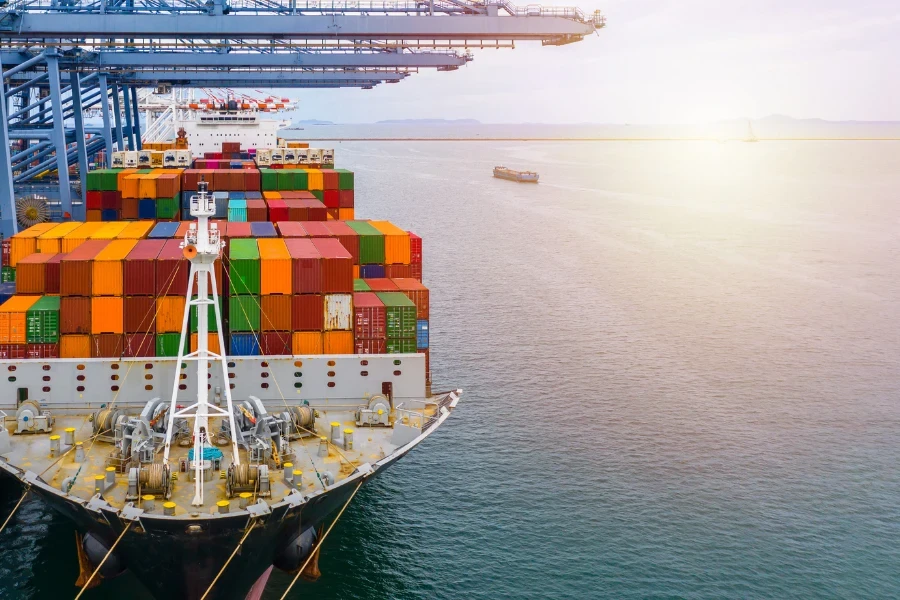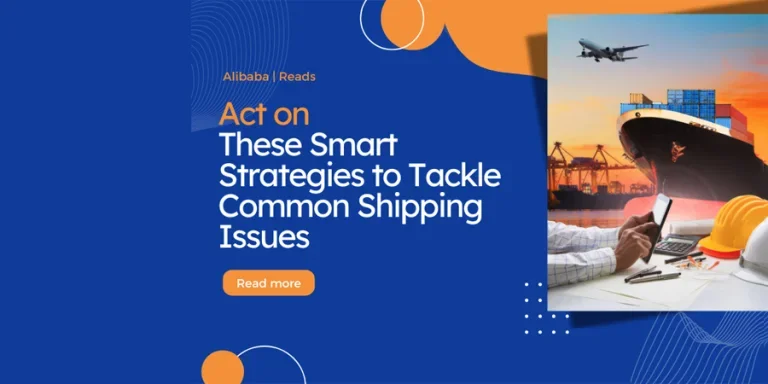In the fast-paced world of ecommerce, shipping can make or break your business. As we navigate through 2024, retailers face a myriad of challenges, from rising costs and delivery delays to environmental concerns and technology integration. But fear not! We’ve compiled a list of 9 smart strategies to help you tackle these common shipping issues head-on.
Table of Contents
● Diversify to combat supply chain disruptions
● Slash shipping costs with these 9 tactics
● Minimize delivery delays and keep customers informed
● Protect your products and profits with shipping insurance
● Prevent lost shipments with these 9 best practices
● Navigate customs and regulatory changes like a pro
● Embrace sustainability in your shipping strategy
● Invest on premium customer service that got your logistics covered
● Seamlessly integrate shipping technology and maintain data security
Diversify to combat supply chain disruptions
In an increasingly interconnected world, supply chain disruptions can have far-reaching consequences. Take the Suez Canal blockage in 2021, which held up $9.6 billion of global trade daily, according to BBC. While such large-scale events are rare, ecommerce businesses must prepare for potential disruptions caused by geopolitical tensions, natural disasters, and pandemics.
One effective strategy to mitigate supply chain risks is diversification. By spreading your inventory across multiple locations, you can ensure that if one facility is impacted, you can still fulfill orders from another. Similarly, partnering with multiple shipping carriers allows you to pivot quickly if one experiences delays or capacity constraints.

Slash shipping costs with these 8 tactics
Rising shipping costs can eat into your profits and drive customers away. To keep your expenses in check, consider these 9 cost-saving tactics:
- Compare prices across carriers to find the best deals for your business.
- Use carrier-provided packaging when possible to avoid unnecessary costs.
- Explore flat-rate shipping options for frequently shipped items or destinations.
- Negotiate rates with carriers based on your shipping volume.
- Outsource first-leg transportation from Alibaba.com’s fulfillment network to benefit from its economies of scale. Currently, there are over 1,700 freight providers and 100 logistics companies cooperating with alibaba.com to meet the logistics demands of business owners.
- Optimize your packaging to minimize dimensional weight charges.
- Offer in-store pickup or local delivery for nearby customers.
- Implement free shipping thresholds to encourage larger orders and offset costs.
By implementing these strategies, you can significantly reduce your shipping expenses without compromising on service quality.
Minimize delivery delays and keep customers informed
Late deliveries can frustrate customers and damage your reputation. In fact, a staggering 58% of consumers would abandon a brand after just three delayed shipments, as reported by Shopify. To minimize the impact of delays, it’s crucial to set clear expectations with your customers and keep them informed throughout the shipping process.
Start by choosing carriers that offer reliable delivery times and guarantees. Communicate estimated shipping dates upfront, and provide tracking information so customers can monitor their packages in real-time. Consider using 3PLs with tracking feature, which allows customers to access live-map tracking and receive notifications for every parcel.
If delays occur, proactively reach out to affected customers to apologize and provide updates. Transparency and timely communication can go a long way in maintaining customer trust.
Protect your products and profits with shipping insurance
Damaged goods are a frustrating reality of ecommerce shipping. While careful packaging can help, some factors are beyond your control. That’s where shipping insurance comes in – it protects your business from financial losses due to damaged or lost packages.
Many carriers, like UPS, offer built-in insurance for shipments under $100. For higher-value items, consider purchasing additional coverage. The peace of mind is well worth the small investment.
Remember, the way you handle damaged shipments can make or break the customer experience. Have a clear process in place for reporting damage, filing claims, and issuing replacements or refunds.
Prevent lost shipments with these 9 best practices
Few things are more frustrating for customers than eagerly awaiting a package, only to find that it has gone missing in transit. While some factors, like theft, may be outside your control, there are several best practices you can implement to minimize the risk of lost shipments:
- Partner with reputable carriers that have a proven track record of reliable delivery.
- Ensure your shipping labels are clear, accurate, and securely attached to the package.
- Use durable, weather-resistant packaging materials to protect against damage or label degradation.
- Require signature confirmation for high-value or sensitive shipments.
- Enable address verification, such as Google Autocomplete, to prevent errors at checkout.
- Provide detailed tracking information to both your team and the customer.
- Set up automated notifications for delivery exceptions or delays.
- Have a clear process in place for reporting and resolving lost shipments.
- Consider using GPS tracking devices for highly valuable or time-sensitive packages.
By implementing these best practices, you can reduce the likelihood of lost shipments and ensure a smoother delivery experience for your customers.

Navigate customs and regulatory changes like a pro
International shipping comes with its own set of challenges, from customs regulations and duties to ever-changing trade agreements. Post-Brexit and other global trade shifts have further complicated the landscape for ecommerce businesses.
To navigate these complexities, it’s essential to stay informed about the latest regulations and requirements for each country you ship to. Use resources provided by your carrier, such as the FedEx Guide to Customs, to ensure you have the proper documentation and are prepared for any applicable duties or taxes.
Be transparent with your customers about potential customs fees and processing times. Include clear warnings on your shipping policy page and provide updates if there are any unexpected delays.
Embracing sustainability in your shipping strategy
Sustainability has become a top priority for consumers, with 28% of US shoppers considering the environmental impact of delivery when making online purchases, according to Statista. As an ecommerce business, it’s essential to incorporate eco-friendly practices into your shipping strategy.
One simple step is to switch to sustainable packaging materials, such as biodegradable plastics or recycled cardboard. You can also optimize your packaging sizes to minimize waste and reduce your carbon footprint.
Invest on premium customer service that got your logistics covered
No matter how well you plan, shipping issues are bound to arise from time to time. How you handle these situations can make all the difference in saving your time and energy and protecting your interest.
Alibaba.com’s Trade Assurance program provides an added layer of security for buyers and sellers alike. The program offers a Payment Assurance or Refund Assurance if you do not receive the goods promised in your purchase contract according to the shipping information, this service enables you to operate with greater confidence and peace of mind.
By leveraging this program, you could better plan out and manage inventory knowing orders will be delivered on time. If late delivery occurs, you will receive a coupon which can be used for future purchases. Alibaba.com reviews your claim directly, saving you time spent negotiating with suppliers. All you need to do is to:
- Find products that support On-time Delivery Guarantee.
- Pay using your preferred payment method through the Alibaba.com platform.
- Make a claim if delays occur.
For Scaleup, Enterprise, and Enterprise Pro buyers, compensation is automatically issued to their accounts.
Seamlessly integrate shipping technology and maintain data security
In today’s digital age, a modern ecommerce business runs on technology. Yet, integrating multiple platforms and tools can be challenging, especially when it comes to shipping.
Between order management, inventory tracking, and delivery notifications, shipping technology must be seamlessly integrated to ensure accuracy and efficiency. Data security, including safeguarding customer information during the logistics process, is also of utmost importance.
Alibaba.com offers a comprehensive suite of tools and resources to help businesses streamline their shipping processes. By leveraging Alibaba.com Freight, sellers can easily compare quotes from multiple logistics providers, book shipments, and track their cargo worldwide. The platform’s integration with popular ecommerce software ensures a smooth flow of information between systems.
As technology continues to evolve, staying up-to-date with the latest innovations will be crucial for staying competitive in the ecommerce landscape.
Conclusion
Shipping may be complex, but it doesn’t have to be a headache. By implementing these 9 smart strategies, from diversifying your supply chain to embracing sustainability, you can tackle common shipping issues and turn them into opportunities for growth.
Remember, your shipping strategy is an integral part of your customer experience. By prioritizing transparency, efficiency, and personalization, you can build a loyal customer base that will support your business for years to come.
As we navigate the ever-changing world of ecommerce in 2024 and beyond, staying adaptable and innovative in your shipping approach will be the key to success. Whether you choose to keep logistics in-house or outsource to a trusted 3PL partner like Alibaba’s Trade Assurance shipping & logistics services, the goal remains the same: to deliver an exceptional experience that keeps customers coming back for more.





 Afrikaans
Afrikaans አማርኛ
አማርኛ العربية
العربية বাংলা
বাংলা Nederlands
Nederlands English
English Français
Français Deutsch
Deutsch हिन्दी
हिन्दी Bahasa Indonesia
Bahasa Indonesia Italiano
Italiano 日本語
日本語 한국어
한국어 Bahasa Melayu
Bahasa Melayu മലയാളം
മലയാളം پښتو
پښتو فارسی
فارسی Polski
Polski Português
Português Русский
Русский Español
Español Kiswahili
Kiswahili ไทย
ไทย Türkçe
Türkçe اردو
اردو Tiếng Việt
Tiếng Việt isiXhosa
isiXhosa Zulu
Zulu